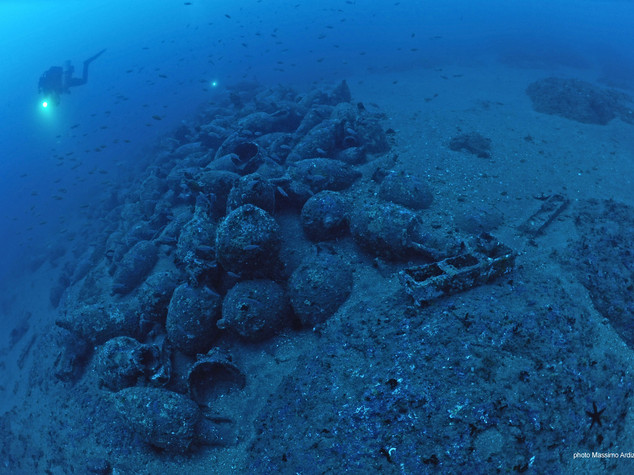Roman shipwreck on ancient sea route studied in Sicily
(AGI) Catania, July 25 - Sicily's Sea Authority is studying a Roman-era ship tha...

(AGI) Catania, July 25 - Sicily's Sea Authority is studying a Roman-era ship that sank with a cargo full of jugs in the waters of Aci Trezza in the 2nd century BC. The area was a hub for jug trading and one of the points on an ancient sea route described in the Aeneid. The Sea Authority is mapping the ship with X-rays, photographs, and samples that it will use to create a 3D relief that will be used for subsequent scientific work. Head archaeologist Philippe Tisseyre coordinated the mapping and documentation operations under the direction of superintendent Sebastiano Tusa, while the 3D data was elaborated by Salvo Emma. The cargo includes at least five different types of jugs (or amphorae), and may provide important information on the navigational challenges of that period and how jugs were redistributed along the network. A brief study will also be carried out to determine which type of clay was used, as well as the location of the furnaces in which the jugs were produced. The shipwreck was found in 2011 at a depth of 65-80 metres and first explored by the "Rebreather Sicilia" scuba diving team. They collaborated with Sicily's Sea Authority to carry out photographic and video documentation that gave birth to the "Ombre dal fondo" project. Following the initial technical operations in 2015, the Sea Authority is currently carrying out a detailed study of the ship and its cargo. Two jugs separate from the main cargo have been recovered: a Dressel 1C amphora and a smaller one with a Greco-Italic shape. The majority of the cargo is composed of "transitional" Greco-Italic amphorae from Campania or Etruria and some Dressel 1C jugs. The 3D mapping also revealed a number of Lamboglia 2/Greco-Italian amphorae that have already been found together in other shipwrecks in the Mediterranean. The findings suggest that a number of ports existed on the Adriatic and that the ship sank near a hub for jug redistribution. Though there are still problems in dating these types of amphorae, they most likely date back to the late 2nd century BC. The study carried out by Sicily's Sea Authority will also help reconstruct the cargo, how it was placed on the ship (which was 15 metres long and 4 metres wide), and explore the characteristics of the ship itself. In addition, the information will add another piece to the puzzle of commercial vessels along Catania's coast, highlighting the importance of ports of call like the one on the Cyclopean Isles, which was mentioned in the Aeneid and likely had cultural significance as well. With the support of the Port Authority, a remote-controlled underwater robot will further scour the area around the shipwreck over the next few weeks to uncover other potential objects from its cargo. (AGI). .

